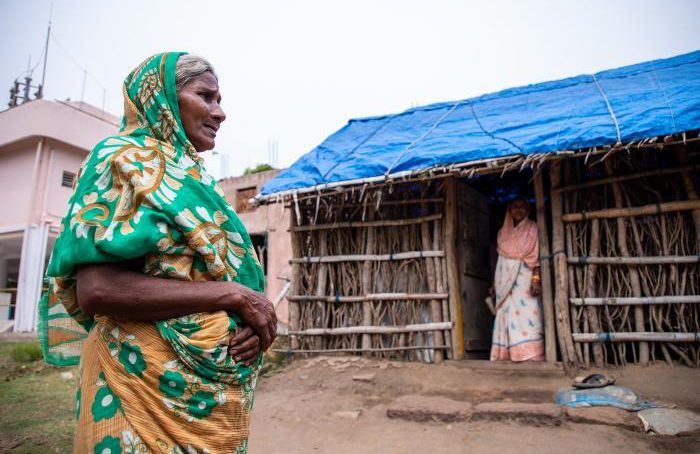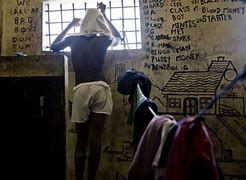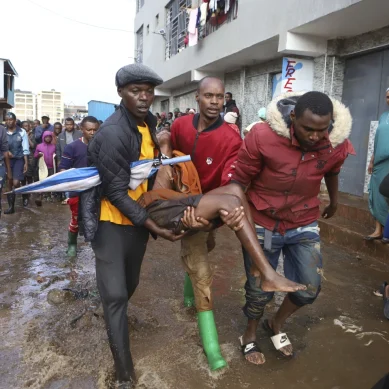
When devastating floods hit India’s western state of Kerala in 2018, Seena’s family had nowhere to go. After water submerged their home, Seena, her parents and her brother walked three kilometres to the nearest relief centre at a temple, only to be told they weren’t allowed to enter.
In 2019, when Cyclone Fani ravaged Bijoy’s house in the eastern state of Odisha, the wage labourer walked to a relief shelter with his family and was also turned away.
Although these incidents took place on opposite coasts a year apart, they have a common denominator: caste. Both families come from the Dalit community, which – along with Adivasis, or Indigenous peoples – is the lowest rung in the world’s oldest social hierarchal system, which vertically stratifies Indian society.
Fearing violence against them for speaking out, both Seena and Bijoy asked to be referred to by pseudonyms.
“Your caste determines what kind of treatment you will get during a disaster,” Sangram Mallick, an activist and co-founder of Ambedkar Lohia Vichar Manch, an NGO working on caste-based issues, explains.
Historically marginalised, many of the 280 million Dalits that form 20 per cent of India’s population today still live on the fringes of society. About a third of the population remains impoverished, according to the UN, and they often continue to be shunned by so-called oppressor castes who hold power at both the village and federal levels.
Viewed by members of the other castes as “untouchables”, Dalits particularly struggle during disasters, when community members bar them from accessing shared water and sanitation facilities: Since the Hindu religious belief operates on strict lines of purity, there is a belief that a Dalit touching a common water source will “pollute it”.
As climate change continues to bring worsening floods, droughts, cyclones and more to India, the government is being called upon to do more to protect against caste-based discrimination. A sweeping study released in September by the National Campaign on Dalit Human Rights warned that “climate apartheid” was likely to hit Dalits and Adivasis the hardest, and outlined “systemic inadequacies and disregard in involving their participation in disaster/drought risk management.”
“[Indian] society has its dysfunctionalities, and disaster or any kind of crisis just accelerates these dysfunctionalities,” Sarbjit Sarota, a disaster risk reduction specialist at UNICEF India, told The New Humanitarian.
When the floodwaters started rising in 2018, it didn’t take long for them to find Seena’s home.
“Our houses were submerged in water during the 2018 floods, as high as nine to 10 feet,” Seena told The New Humanitarian, showing the watermarks on her house, still visible four years after the disaster struck.
That her home was so badly hit was hardly a surprise. Dalits such as Seena and Bijoy are forced to live in segregated colonies that sit apart from the dominant caste settlements in their village. Such neighbourhoods are invariably situated in areas more vulnerable to natural disasters. Seena’s Dalit-majority colony in Thiruvalla, Kerala, for instance, sits at a lower elevation and is more than three kilometres away from the main paved road.
Within rural villages, meanwhile, temples are typically built at high elevations and on strong foundations – making them ideal spaces for disaster relief. But because they are religious spaces, community members can wield a great deal of control over who enters. During the 2018 floods, Seena and her family were told that only members of the Nair community – a dominant caste – could seek shelter in the temple.
“We are not from the Nair community, so it is impossible for us to get a membership with the temple,” said Seena.
But even when disaster shelters sit in public spaces, Dalits are often barred by their neighbours. During Cyclone Fani in 2019, 36% were turned away from relief shelters in the Puri district of Odisha, according to a study jointly undertaken by the National Campaign for Dalit Human Rights (NCDHR) and Ambedkar Lohia Vichar Manch.
“Indian society has its dysfunctionalities, and disaster or any kind of crisis just accelerates these dysfunctionalities.”
After being blocked from entering the Nair temple, Seena had to walk another two kilometres to reach a school that was designated as a flood relief shelter by the Kerala government. They then had to move to another school two days later after the shelter began to flood.
In both Seena and Bijoy’s villages, only the dominant caste houses are connected to a paved road. “In my experience of more than 20 years, I have observed that where the road ends, Dalit settlements start,” said Ajay Kumar, executive director at RIGHTS, an organisation that serves marginalised communities, particularly Dalits and Adivasis.
In another study, conducted by NCDHR and Kerala-based RIGHTS, 63 per cent of Dalits said that quick and adequate rescue was mainly provided to areas that were more easily accessible. Policy lapses like this count as cases of discrimination by default since the areas that are most accessible are almost always occupied by dominant caste families.
- The New Humanitarian report











